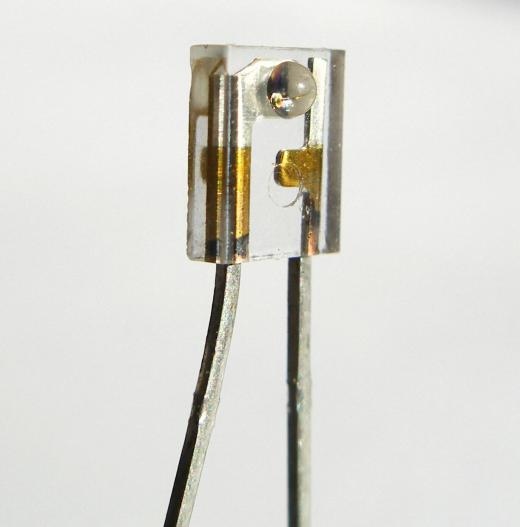A photodiode is an electrical device used to detect and convert light into an energy signal through the use of a photodetector. The photodiode can use a fiber optic element to deliver the light to the diode circuit to convert it to energy. It could also perform the same function through a device similar to a solar panel or window.
In most cases, the photodiode is used to deliver a trigger signal to an electrical device when it is either exposed to a UV ray or X-ray. It may also be used to deliver the same trigger signal when the light source is either turned off or the photodiode is blocked from the light source. Another function a photodiode can perform is to keep an electrical device operating through the process of converting light into a power signal or voltage.

A photodiode works primarily on either a PIN or a PN connection structure. This means that the moment a light source, such as a UV ray or an X-ray, is able to reach the diode, the reaction inside the diode is the interaction of electrons. This interaction between the electrons creates a hole that becomes positively charged, which moves naturally toward the anode connection of the circuit. At the same time, the excited electrons are naturally attracted to the cathode connection.
These two naturally occurring reactions to the light source create what is referred to as a photocurrent. This means the light source has been converted into energy, typically resulting in the conversion of the light source into voltage. This converted energy is then delivered to the input signal circuit of the electrical device it’s been designed to be connected to. This allows the input signal from the photodiode to power the electrical device through the energy produced from the light source.
There are different uses for photodiodes, depending on what they are being used for. In photovoltaic mode, for instance, the signal that is generated from the diode being exposed to a light source is gathered and stored. It is then dispersed as an output signal as needed for the device or devices it’s connected to.
This mode of usage is generally relevant to solar panels. Another mode of usage is called photoconductive. In this mode, the energy created by the diode’s exposure to a light source is used as a direct power signal for the electrical device the diode is being used to power.
